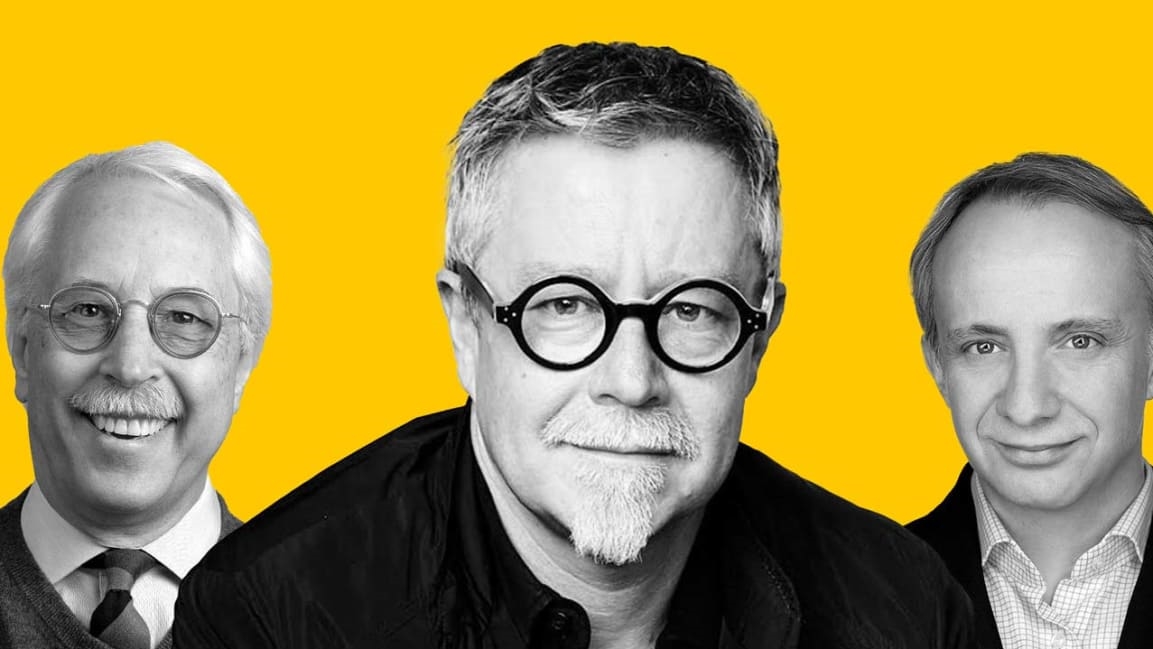Why thinking innovatively means paying attention to design
There are few who would say the point of innovation is for improving the human condition. While history is pockmarked with tumultuous events, genuine progress has always been the product of innovation—be it in philosophy, public policy, science or business. Given the vast array of challenges facing our species in this new millennium—pandemics, climate change, rogue states, ethnic strife, political polarization, threats to privacy, yawning wealth gaps, and more—the need for radical innovation is more pressing than ever.
That’s why we were keen to sit down with Tim Brown, chair of IDEO, the iconic Palo Alto-based design firm where Tim has worked since 1987. Having led hundreds of innovation projects in the private and public sector, Tim knows more about the creative process than just about anyone on the planet. Tim’s own designs, it should be noted, has been exhibited at the Design Museum in London, and at New York’s Museum of Modern Art.
We start by asking Tim to define “design thinking”—the conceptual pillar that underpins his work. Says Tim, “Whenever we are shaping the world to meet our needs, we’re designing. Whenever we’re being intentional about how we want to shape the world, we’re embarking on some kind of design process.” By that definition, all of us are designers, but, as Tim points out, most of us aren’t very good at it. Bad design is everywhere—design that’s not informed by user needs, that doesn’t challenge stale thinking, and hasn’t been refined through a process of relentless iteration. That’s why Tim is such a passionate apostle for design thinking—a set of principles and tools that, he argues, can help anyone to dramatically amplify their creative capacity.
We push back—more to enliven the discussion than to argue with Tim’s assertion. In Silicon Valley, the epicenter of business innovation, there’s a widely held belief that rule-busting innovators are a rare breed. Unlike mere mortals, great visionaries like Google’s Larry Page, Tesla’s Elon Musk and Netflix’s Reed Hastings have been genetically endowed with an ability to see beyond what is and imagine what could be.
Tim agrees that some individuals are inherently more creative than others, but says this shouldn’t deter anyone from working to develop their own creative gifts. “Think of writing,” he says. “There’s only one Shakespeare, but there’s a host of people who make their living by writing. If we didn’t have writing available to us, the world would be a poorer place. Similarly, if everyone had access to the tools of design thinking, and was able to bring new ideas into the world, then the capacity of humanity to advance its cause would be so much greater than if we relied solely on people like Steve Jobs and Elon Musk.
Rather than staking our hopes on a few celebrated entrepreneurs, Tim argues we need “an approach to innovation that’s powerful, accessible, and integrated into all aspects of business and society.” That’s a noble goal, but far from the reality in most organization. For example, in a recent Gallup survey, only 14% of employees strongly agreed with the statement that “I could take risks at work that could lead to important new products, services or solutions.”
Tim unpacks the problem. “Managers,” he says, “spend almost all of their time focusing on efficiency. In most of the organizations I work with, the probably of getting someone at almost any level to dedicate more than 10% of their time to a creative project in a given week is almost zero. And yet at IDEO, as people who spend all our time innovating, we know that you need to devote 90% of your time to a new project if it’s going to have any chance of succeeding.”
He continues: “People have very little time, but they also have very little confidence in their ability to innovate. My colleague, David Kelly, talks about the notion of “creative confidence,” which is the combination of the ability to have ideas and the courage to act on them. But we do very little in most organizations to develop this confidence.”
This, Tim argues, is where leadership comes in. Leaders can inject design thinking into training programs, and, just as critically, can carve out time for their teams to innovate. “As a leader,” Tim says,” you have to get involved, not because you have the best ideas, but because you need to support and enable the people who are innovating. You need to show you are committed to it.” When asked to name a CEO who does this, Tim points to Apple Chair and CEO, Tim Cook. “He’s delivered more value for shareholders than any executive in history,” Tim notes, “and he did that not by cutting costs or making big deals, but by delivering innovative products and services.”
If innovation is going to thrive, Tim believes we must rethink the role of leaders. “The notion that leaders have all the answers is toxic to innovation,” he argues. Says Tim, “We need leaders who inspire curiosity and discovery by asking insightful questions that send the organization off in new and interesting directions. I like the metaphor of an explorer who stands on the beach, looks at the horizon, and asks, ‘What’s on the other side of the horizon? What happens if we go in that direction?’ And then encourages people to get into boats and set off.”
As a leader, it’s hard to mentor innovation, Tim argues, unless you’ve been an innovator yourself—unless you’ve had to tackle a fundamentally new challenge, dig deep into the user experience, brainstorm dozens of potential solutions, and then test and refine the best ideas through rapid prototyping. We concur. In many organizations, executives can rise through the ranks without ever having to develop their own creative chops. Worse, the typical MBA program does little to develop the creative confidence of managers-to-be. Tim is right when he notes that in a typical MBA program, students analyze dozes of case studies, but are seldom challenged to actually build something—be it a product prototype, a new business model, or a new management tool or process.
Reflecting on his own experience, Tim says, “When I went to design school, I did project after project. By the time I got through, I’d worked on dozens of things.” When we ask how this might be replicated in an MBA program, Tim points to Stanford University’s d.school, an interdisciplinary center that brings students together from across the campus to tackle real-world problems using design thinking. “It’s important,” he says, “to make sure that MBA students are doing hands-on projects with other disciplines outside the business school.”
The bigger point is this: Few institutions invest systematically in building the creative skills of their members and employees. That needs to change, and in talking to Tim, you get the sense that he won’t hang up his spurs up until it does.
Editor’s note: This article is part of the video and editorial series The New Human Movement, which aims to highlight bold thinkers and doers who are reimagining work and leadership.
Gary Hamel is a business thinker, author, and educator. He is on the faculty of the London Business School and the Harvard Business Review Press best-selling book, Humanocracy: Creating Organizations as Amazing as the People Inside Them.
Michele Zanini is the co-founder of the Management Lab (MLab), where he helps organizations become more adaptable, innovative, and engaging places to work. He is the coauthor of Humanocracy: Creating Organizations as Amazing as the People Inside Them.
Fast Company , Read Full Story
(33)



